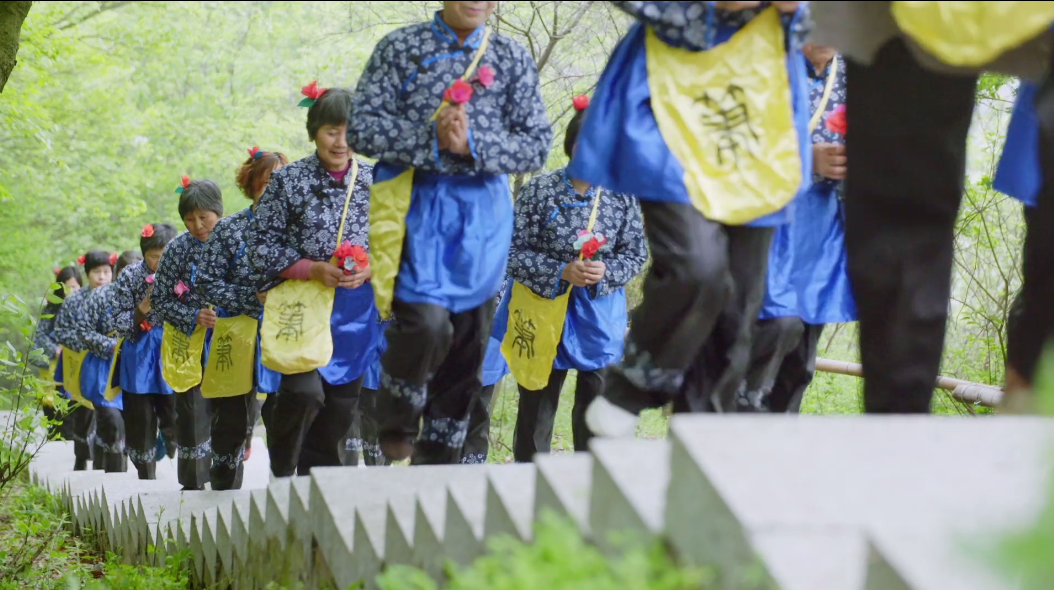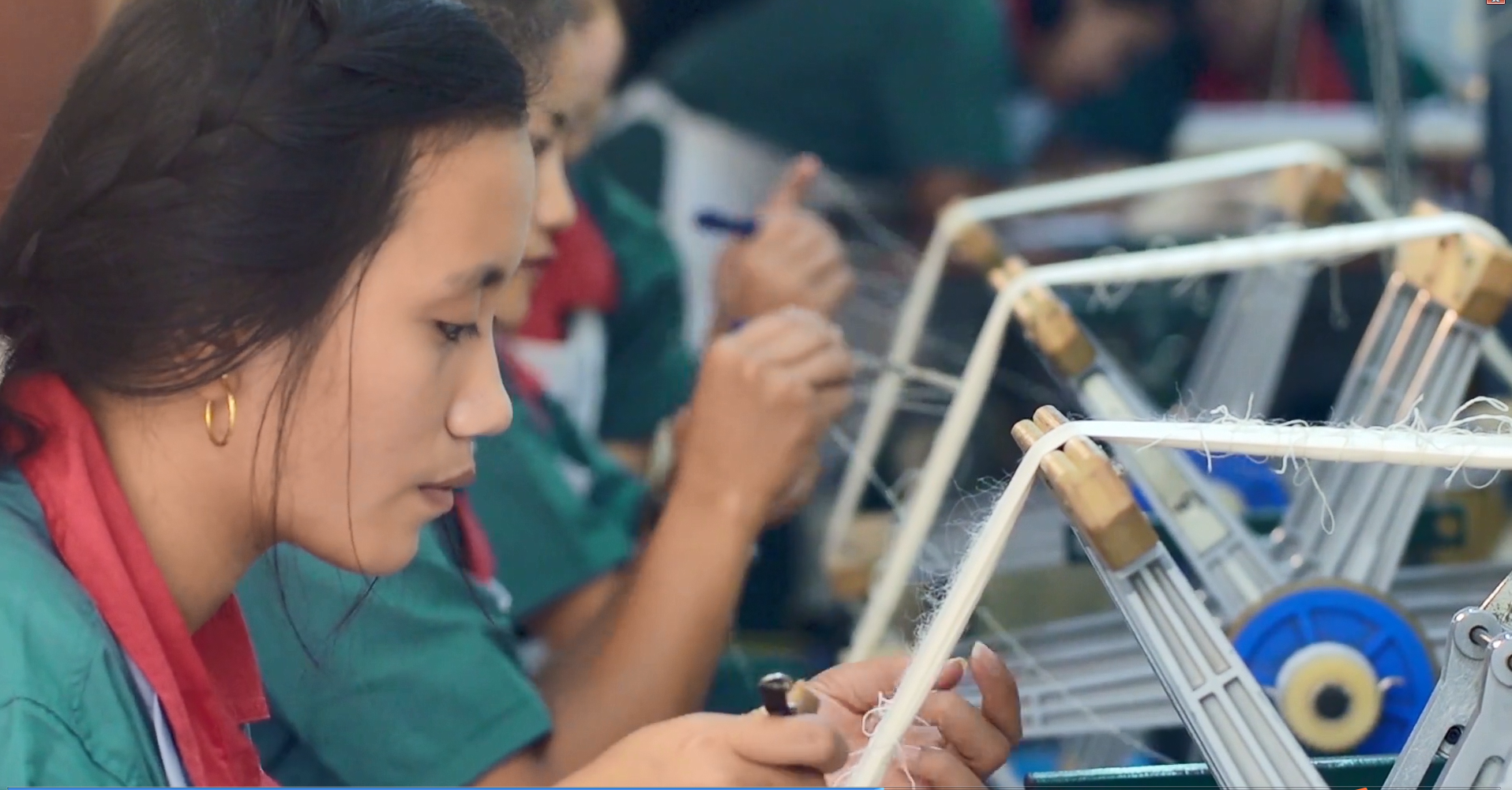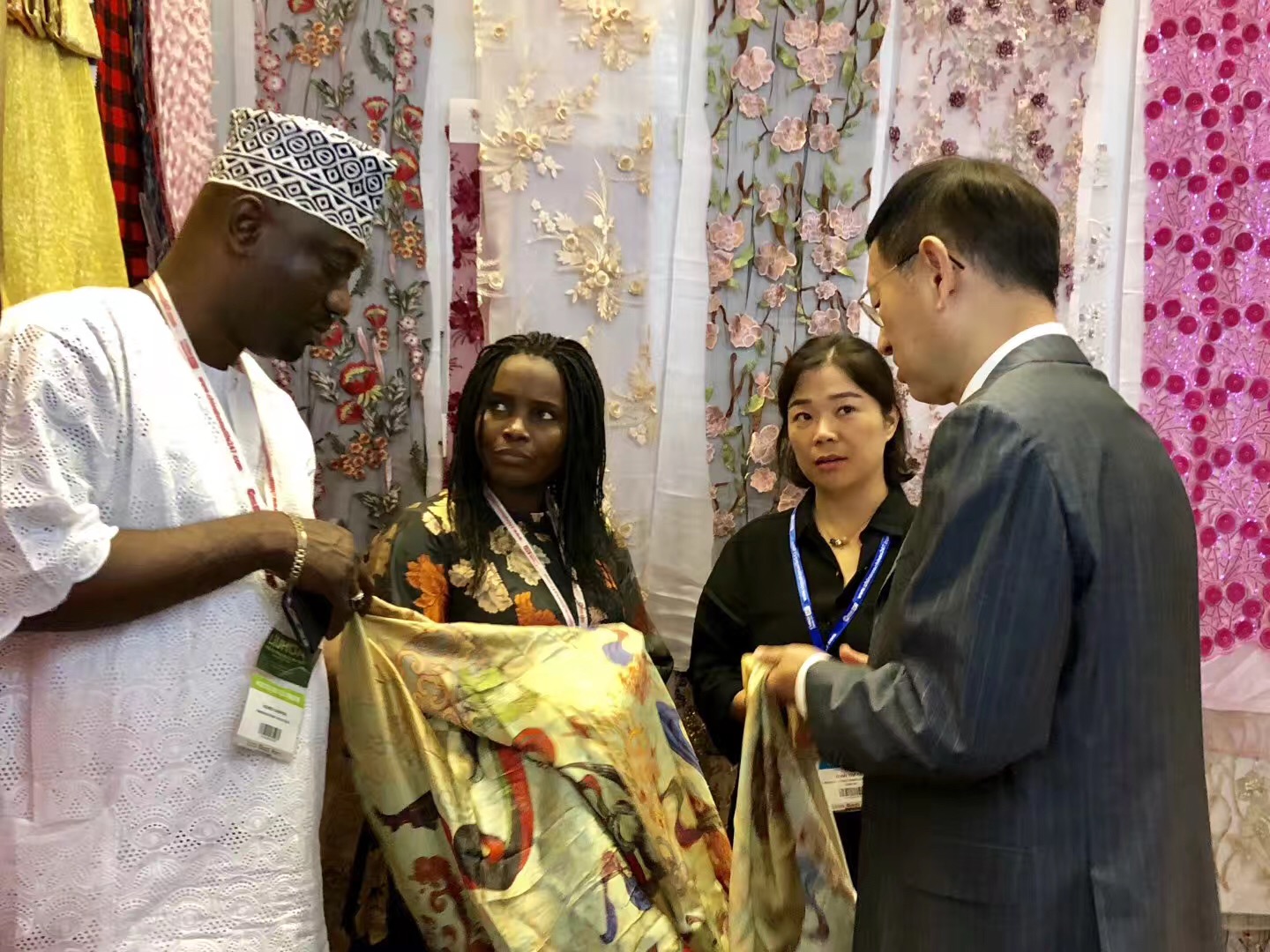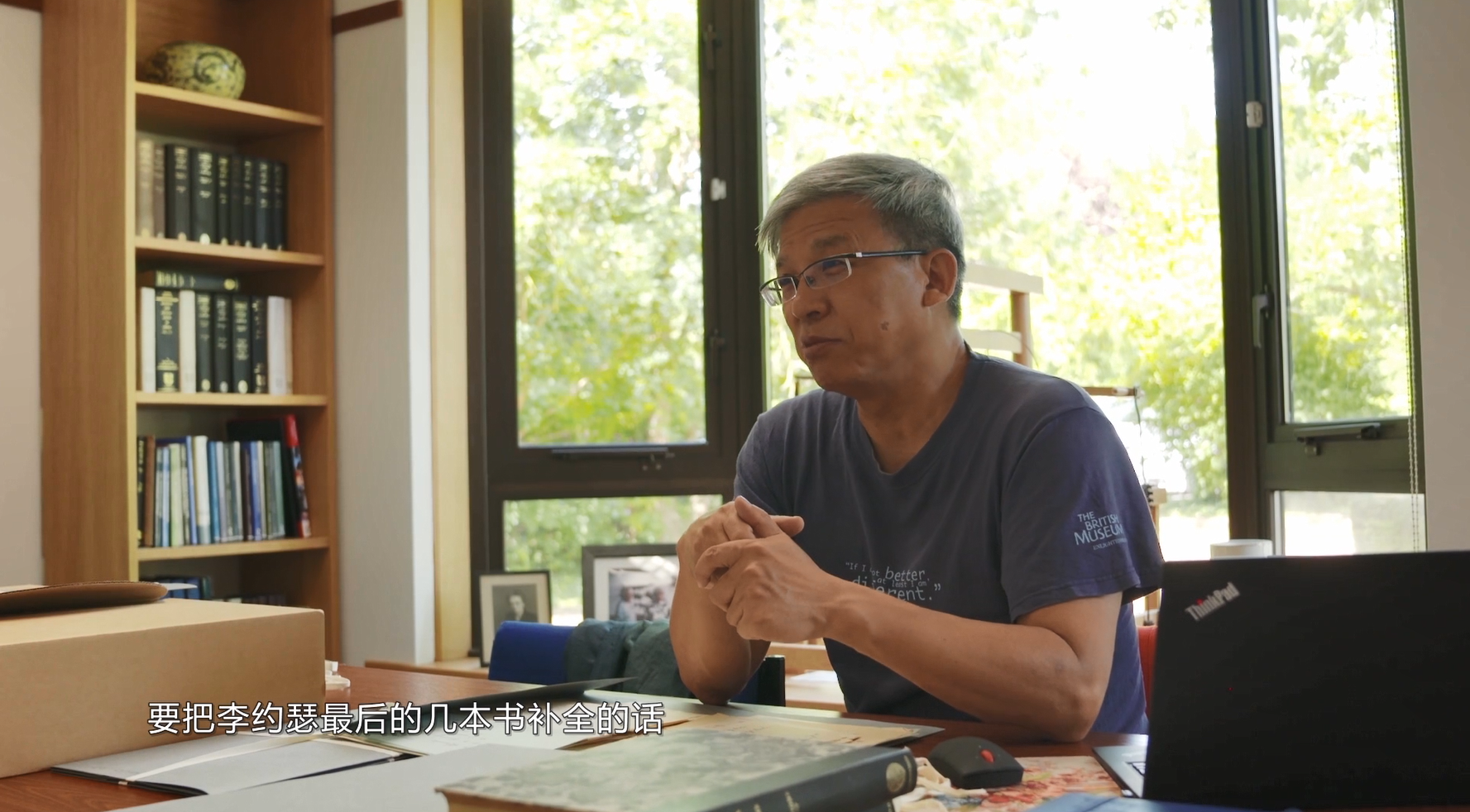Zhejiang Silk: Outlook and Mood
Hangzhou has an important geographic location and beautiful scenery, and was the metropolis of Wu, Wuxing, and Kuaiji. Its prosperity had been being attributed to flourishing farming and sericulture, and the silk industry resulted therefrom had been supporting half of the populousness and affluence of the Southeast Region. It is said that the character of “桑” was found in inscriptions on bones or tortoise shells of the Shang Dynasty, image-texts on mulberry leaf harvest were found on bronze wares of the Warring States Period, and it was read “if a person owns a house with a courtyard as large as five mu, and plants mulberries, the one older than 50 can wear silk garment” in the Mengzi, all of which record the long history of the silk industry of China; the archaeological findings in Zhejiang, including the ivory cup with silkworm-shaped inscription dated back to 6,000 years ago unearthed from Hemudu Site in Yuyao and the silk relic of more than 4,000 years ago unearthed at Qianshanyang in Huzhou, eloquently proved that all over China, Zhejiang is the father of silkworm breeding and mulberry growing and the source of silk. The Oriental Splendor - Silk, starting with the Silk Flower Temple Fair of Hanshan in Huzhou, makes a careful and detailed analysis of the history of China’s silk industry represented by Zhejiang historically and culturally, and presents the drastic changes like nirvana of phoenix of China’s silk industry in its ups and downs with thick and heavy colors, especially the bright prospect of China’s silk industry with the reform and opening-up policy in the context of globalization.

Presently, it is far from enough to speak of silk industry by merely relating to Zhejiang or China. China’s silk industry was amazingly notable, and the famous “Silk Road” is proof. Nevertheless, China’s silk industry also lagged far behind the world level. Handicraft workshop production mode had never radically changed even after public-private partnership. Besides, China had been secluding itself from the outside world for a long time, and the silk industry in developed countries had turned from industrialization into robotization for a long time. As a result, China’s silk industry fell far behind. If silk is said to be a name card of Zhejiang and even China, the name card is no longer the “local specialty” of China and decadent, and is facing the world’s silk industry changing from day to day and is greeted by increasingly intense quality competition and market test.
The value of Oriental Splendor - Silk rests in that the harsh reality that China’s silk industry is on the edge of death is not denied. Of course, we have a history of thousands of years of silkworm breeding and mulberry growing, remain the Silk Flower Temple Fair, and boast the classical aesthetics of Nanjing brocade and the century garment production technology of Hangzhou Zhen Xing Xiang, and so on. The documentary is intended to discover the history and culture of China’s traditional sericulture industry and silk industry, but it is always presented from the view of the world and put under the context of internationalization to observe and analyze China’s silk industry; meanwhile, the view is diverse and elastic, from our neighbor of the Southeast Asia to Europe on the other side of the ocean, and from the historical sites dated back to five or six thousands of years ago to fashion show in Lyon; under the vertical and horizontal time and space background, China’s silk industry becomes clear about its position, and identifies its advantages and disadvantages, which is the “start of the long march” of Zhejiang Silk people; thus, Zhejiang silk people are given direction of efforts. For example, Cathaya Group extended its workshop in the field, cultivating quality from mulberry planting and having formed an industry linking Chun’an of Zhejiang and Dehong of Yunnan; traditional and modern elements are combined in China’s Qipao making to help improve the silk culture; Wensli Group has made great achievements in inheriting brocade making technology and innovating digital duplex printing technology; High Fashion Group has made great efforts to learn from and catch up Italy in respect of silk printing and dyeing. With the Oriental Splendor - Silk observing Zhejiang’s silk industry from a view of the world, the great efforts of Zhejiang’s silk industry since the reform and opening-up become of great importance, and lead to achievements like nirvana of phoenix.
Outlook decides mood. The decades of development history of Zhejiang’s silk industry produces a batch of silk people with international vision, who forge ahead firmly and indomitably to chase the international frontier, and have hardly created a new page of Zhejiang’s silk industry.

Mr. Fei Jianming, the former head of High Fashion (China) Co., Ltd., and secretary-general of International Silk Union, is a striking example. He was born in a silk family, and threw himself into the silk industry after coming back from the Great Northern Wilderness in northeast China to become a machine repair worker. It can be said that he has spent his life on the silk industry. He had been taking charge of Xihu Silk Plant for years, tried and accumulated a lot of experience of institutional reform, and was suffering from China’s lag in silk technology. After entering and hosting High Fashion International Limited, he aimed at the frontier of the world’s silk industry, tried best to broaden the outlook on China’s silk development, offered high payments to hire an 8-member team from Italy, and came up with the world level in respect of printing and dyeing technology and process management, which is hard to realize without an international outlook and the mood of world first. After retirement, he made great efforts to move the secretariat of International Silk Union to Hangzhou, traced the international silk development, and always tried best to learn and surpass the advanced level of international silk industry. That he spends his whole life on China’s silk development commands the respect. But he is lonely more or less. He found no Chinese silk producer attending the 2018 China (Nigeria) Trade Fair. His alone figure is thought-provoking.

Another example is Mr. Zhao Feng, who is the curator of China National Silk Museum (the only national museum in Zhejiang). For decades since he obtained master’s degree and doctor’s degree of silk, he has been persevering in study on China’s silk development, silk art and history of international exchanges, and has made great contribution to China in respect of theory of silk, silk aesthetics and international exchange. Thus, he was invited to write up and continue writing the collected papers of history studies on China’s silk history of the History of Science and Technology in China by Doc. Joseph Needham organized by the University of Cambridge. Being a leading figure of a new generation of silk researchers, his international standing and influence are another important symbol of China’s silk going to the world. Delightfully, post-80s and post-90s become increasingly active in Zhejiang silk industry with their passion and vigor. The Oriental Splendor - Silk shows that Wang Pengcheng, the general manager of Jingluntang, focuses on contemporary transformation and artistic transformation of silk, is trying to link the silk industry to silk culture closely, and makes efforts to open a modern path for China’s silk development, which is of profound significance. That China’s silk industry blooms in the new era and returns to the center of the world’s silk industry is not only the lifelong pursuit and dream of Fei Jianming, Zhao Feng and Wang Pengcheng, but also has been fused into China’s silk business like blood. This is the mood of Zhejiang silk people of this generation.

The theme of Oriental Splendor - Silk is open and far-reaching, and the writing style is simple and fine. It is concise and accurate in going into Zhejiang historic culture and traditional inheritance, and is rich in country affection and full poetic flavor, which is rare. Fei Jianming extended his wishes to the silk industry: “China’s silk industry is always in an effort, and the world’s silk industry needs to make concerted effort”.
He Zhiyun
Literary critic, former dean of Zhejiang Vocational Academy of Art

